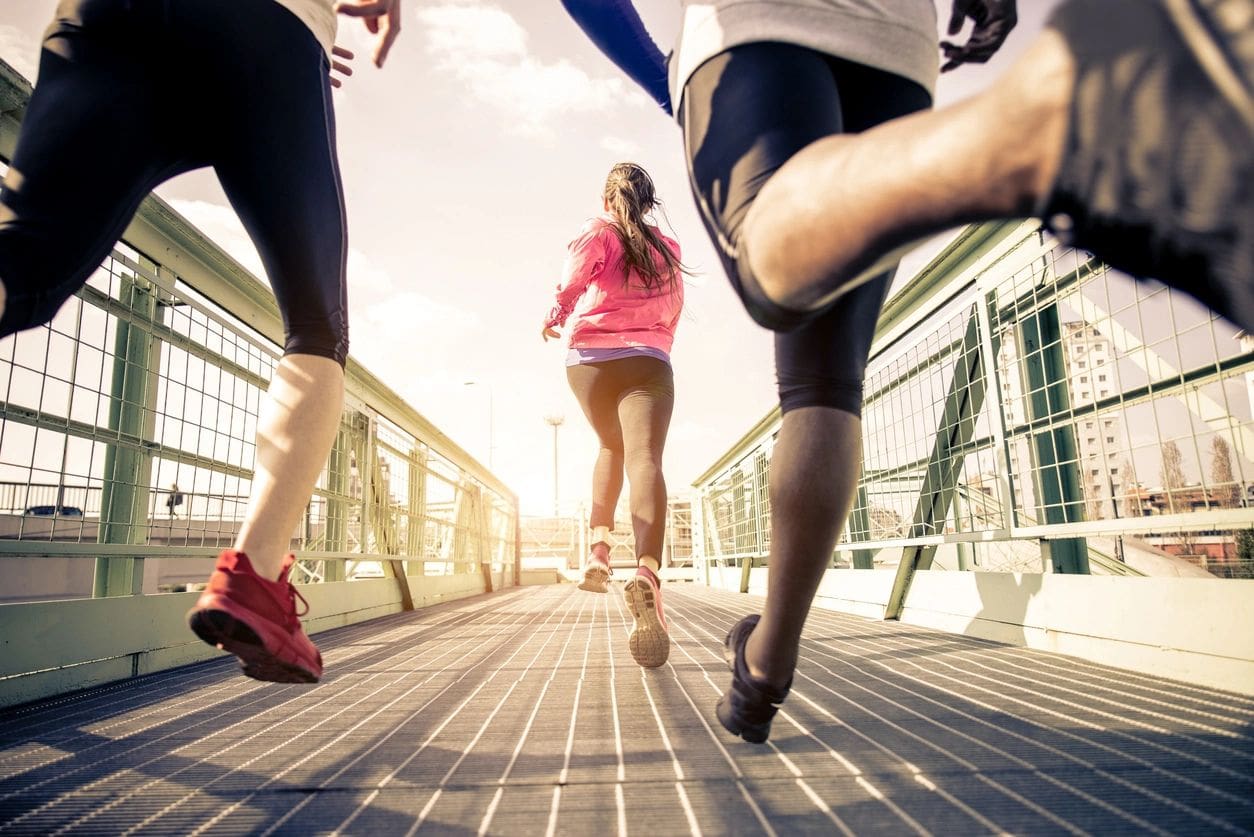
Running 101: Part II
Welcome back to our running series. This post will discuss some of the things that you can do besides run to prepare yourself for running.
You study for an exam by learning the information that you will be tested on. Luckily, we can prepare for running in kind of the same way, because the task of running is a rather predictable task. Just compare it to other activities like soccer or basketball. There are so many variables in these sports, it is impossible to predict the exact movements that you will do over the course of a game. However, we know running is just a series of controlled hops from one leg to the other. Yes, there are some variables, such as speed, distance, hills, and uneven surfaces, but for the most part, these variables are pretty easy to control.
When we run, we know which muscles will be utilized and loaded to help absorb and release energy to create forward motion. We have a good idea of the general range of motion your joints will go through during the course of a stride. Additionally, we know that stability is required to maintain an upright posture while shifting your weight from one foot to the other. When it comes to running, we know the requirements! This is good news, because it means we can train in a strategic way that prepares us for the unique demands of running.
Resistance training is a great way to target the tissues that are regularly loaded while running. The hip flexors, hamstrings, quadriceps, glutes, and calves all do a lot of work when you run to move you in the forward direction. By loading these areas with strategic strength training, you can help these tissues become stronger and more ready to take on load. Eventually, you should incorporate single leg training and some plyometric training (when you are ready) in order to better imitate the demands of running. Resistance training is one of the best things you can do as a runner, and may not only reduce your risk of injury but also improve your speed and your efficiency as a runner.
Gaining mobility or flexibility in certain areas can also help prepare you to run. For the most part, you don’t need a ton of flexibility in order to move through your running stride. However, there are a few areas to highlight. For example, depending on your gait, having good ankle mobility may help you absorb forces better when you land. Your big toe needs to have adequate mobility as well so you can properly push off. If you have had issues with plantar fasciitis in the past, you may need to pay particular attention to your ankle and toe mobility. Another place that may be overlooked is your upper back or thoracic spine. Having good mobility in this area will help you maintain an upright posture. These areas can all be limited by tight muscles or stiff joints, or a combination of the two.
Stability is the final component to consider and is also very important. When you run, you are either supported by one leg or you are in ‘flight’ (with no feet in contact with the ground). In other words, there is never an instance when both feet are touching the ground at the same time. Therefore, you need to have excellent stability and balance standing on one leg. You should be very stable both when standing still and when performing dynamic movements on one leg. This comes from control and coordination of muscles around your trunk, hips, knees, ankles, and feet – all acting together – and stabilizing you in the three different planes (rotational, forward/backward, and side to side). Sometimes, mobility and flexibility also need to be worked on to improve stability or vice versa – stability needs to be improved in order to gain mobility and flexibility.
In this picture, the runner is in mid-stance on the right leg, demonstrating the need to have good stability in a single-leg stance position.

Remember, all worthwhile things take time! By following good training and recovery principles and incorporating resistance training, you are building a great foundation for running. Yoga and pilates can be good ancillary ways to work on stability and mobility. You may also consider consulting with a physical therapist to receive more personalized recommendations.
Like us on Facebook or follow us on Instagram @dynamicptchicago to see posts next week demonstrating some strength, mobility, and stability/balance exercises for runners.
Please contact me at mary@dynamic-pt.com if you have questions regarding a running related injury.
The next post in the series will discuss gait including what we look at during a running gait analysis as well as some misconceptions about the ideal gait.
